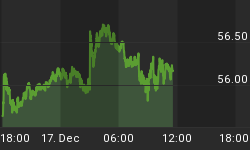Good News, Bad News

Markets can get somewhat confused when the economy begins to strengthen. On one hand, economic growth is good for earnings. On the other hand, an improving economy increases the odds of a Fed stimulus reduction announcement. Thursday's GDP report hit the market with a "is this good news or bad news" dilemma. From Bloomberg:
The U.S. economy expanded in the third quarter at a faster pace than initially reported, led by the biggest increase in inventories since early 1998. Gross domestic product climbed at a 3.6 percent annualized rate, up from an initial estimate of 2.8 percent and the strongest since the first quarter of 2012.
More Sellers Than Buyers?
You may have heard stocks go up "when there are more buyers than sellers." We all know that every stock transaction has a buyer and a seller, which means the number of buyers and sellers is always equal, even under the most bearish conditions.
Markets Move On Relative Conviction
Stocks go up when the conviction of buyers is greater than the conviction of sellers. Therefore, a chart of a stock, bond, commodity, or index can be used to monitor the battle between bullish and bearish conviction. Since investors have limited investment capital, their choices provide insight into their conviction about the economy, earnings, and geopolitical events.

Corrections/Bear Markets Feed Off Economic Fear
If you study significant multi-week corrections or bear markets in stocks, you will find something that has a very high probability of being present; eventually fear picks up and the conviction to own defensive bonds becomes greater than the conviction to own economically-sensitive stocks.
Would I Rather Be In Stocks or Bonds?
Our "relative conviction" approach can be used to monitor longer-term trends in the demand for stocks relative to the demand for bonds. Demand in this case speaks to investor conviction. It is always helpful to compare investment alternatives head-to-head before making opportunity cost decisions. The chart below shows the performance of the S&P 500 (SPY) relative to a diversified portfolio of bonds (AGG). The weekly trend in the chart below, as of December 5, still favors stocks over bonds. Our concerns will increase if the risk-on vs. risk-off ratio morphs into a "correction look" similar to the 2012 cases highlighted in red.

Labor Reports Shows Progress

Investors and traders were hit with a second good news/bad news piece of data Thursday on the important-to-the-Fed labor front. From Bloomberg:
Applications for U.S. employment benefits unexpectedly fell last week to the lowest level in more than two months as the data becomes more difficult to adjust for seasonal variations during the year-end holiday period. Jobless claims decreased 23,000 to 298,000 in the week ended Nov. 30, the Labor Department said today in Washington.
Would I Rather Be Long or Short?
How much impact have increasing expectations for a Fed taper had on bullish economic conviction relative to bearish economic conviction? To answer that question, we will use the weekly chart below, which shows the performance of longs (SPY) relative to shorts (SH). If you are confident about the future, you would rather be long than short stocks. Converting that concept to the chart, when the ratio rises, investors would "rather be long" and when the ratio falls they would "rather be short". The weekly chart helps us stay with the dominant trend by filtering out some distracting volatility present on a daily chart. The red and blue lines are moving averages which filter out some of the week-to-week volatility. The chart below is in the most bullish state (favoring being long stocks) when: (a) price is above the red and blue moving averages, and (b) the slopes of the red and blue moving averages are positive. If the ratio morphs into an "economic uncertainty" look (see below left), our market model will call for a reduction in our allocation to stocks.

Investment Implications: Taper vs. Growth
As we noted on December 4, it is more likely the Fed tapers at a slower than expected rate vs. tapering at a faster than expected rate. The Fed-speak Thursday aligns with that theory. From Reuters:
Expectations that the Fed might start tapering this month were dampened after Dennis Lockhart, the president of the Federal Reserve Bank of Atlanta, said the GDP data "doesn't make a trend and ... doesn't drive me to the conclusion that we've had a breakout in terms of growth."
The market has seen some observable, but not yet overly concerning, deterioration. Consequently, our market model called for a relatively modest reduction in our exposure to foreign stocks (EFA) Thursday. If conditions do not improve before the weekend, the odds are good the model will call for a second incremental move Friday. In the meantime, we continue to hold our stakes in numerous positions, including U.S. stocks (SPY), technology (QQQ), and small caps (IWM).















